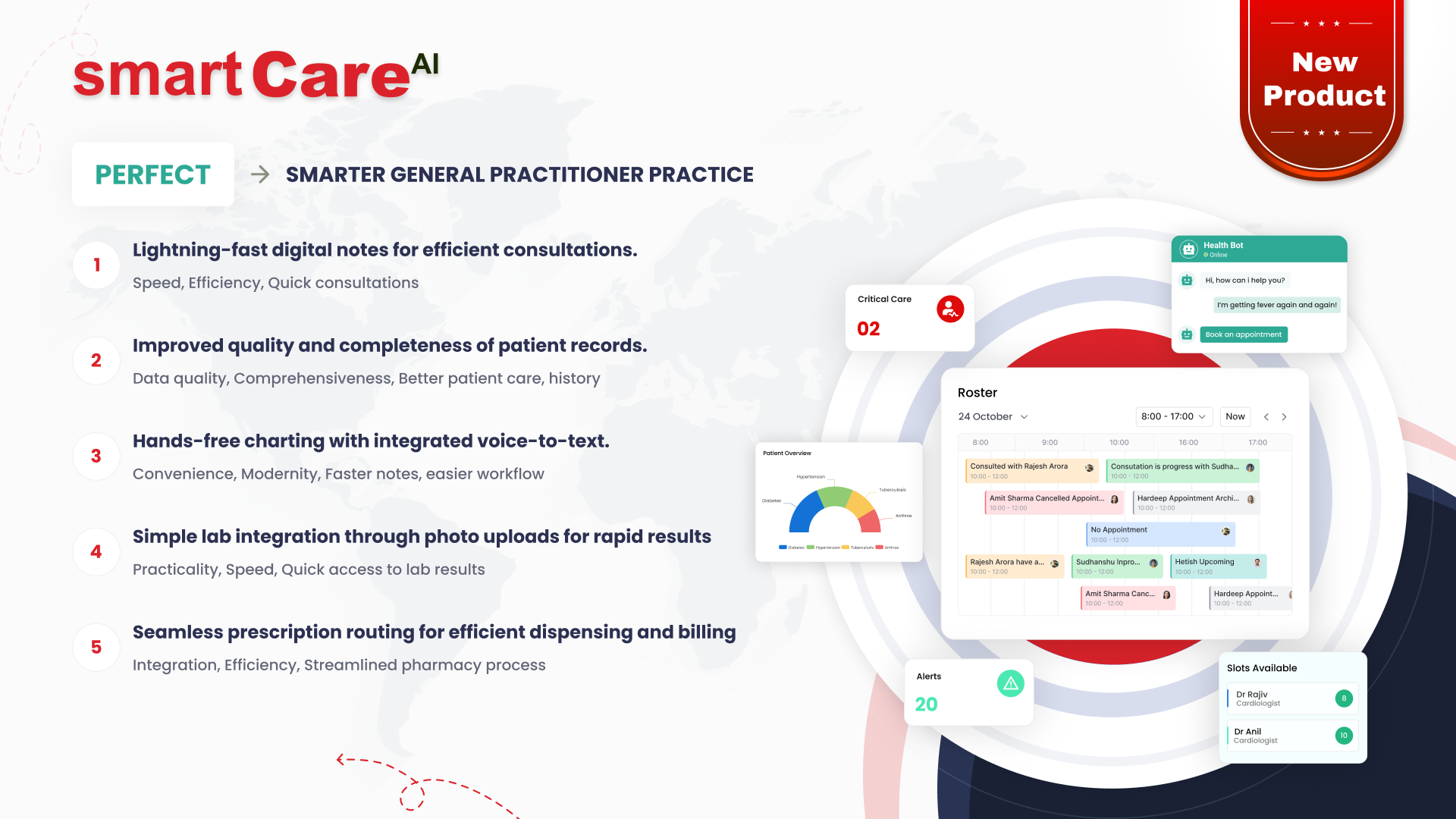Posted On July 15, 2025
What Australian Clinics Should Know Before Digitizing Records
The healthcare industry in Australia is undergoing a digital transformation, and for many clinics, that starts with digitising patient records. Shifting from paper-based systems to digital recordkeeping is a big step, but it comes with a range of benefits—from better patient care to smoother operations. However, it’s not just about scanning and uploading files. There are important factors to consider before making the switch.
Here’s what Australian clinics need to know before they begin the digitisation journey.
Why Australian Clinics Are Moving Towards Digital Records
Australian clinics are increasingly embracing digital health solutions to keep pace with patient expectations and government-led healthcare initiatives. Digitising medical records helps clinics become more efficient, reduce administrative workload, and enhance the quality of patient care.
Digital records allow for faster access to patient histories, easier collaboration across healthcare providers, and improved tracking of health outcomes over time. With telehealth and data sharing on the rise, having an electronic system in place is becoming more of a necessity than an option.
Key Benefits of Digitising Patient Records
Making the move to digital records offers a range of advantages for both staff and patients:
-
Improved Accessibility: Clinicians can access patient files from any authorised device, helping deliver timely and informed care.
-
Reduced Paperwork: Less physical storage means lower overhead costs and a tidier, more organised clinic.
-
Better Data Accuracy: Automated systems reduce the risk of human error during documentation.
-
Stronger Continuity of Care: Digital records allow for easy sharing between providers, especially in multidisciplinary or referral-based care.
-
Enhanced Reporting and Analytics: Clinics can track patterns and outcomes more easily with electronic data.
These benefits not only improve internal efficiency but also create a better experience for patients.
Understanding Legal and Privacy Obligations in Australia
Before digitising records, it’s critical that clinics understand their responsibilities under Australian privacy laws. Healthcare providers must comply with the Privacy Act 1988, which includes the Australian Privacy Principles (APPs).
Key considerations include:
-
Informed Consent: Patients must be made aware of how their data will be collected, used, and stored.
-
Secure Storage: Clinics are responsible for ensuring all digital records are stored safely and protected from unauthorised access.
-
Data Retention Requirements: Patient records must be kept for a specific duration, depending on age and jurisdiction, even after a clinic closes.
Non-compliance can lead to serious consequences, including legal action and loss of patient trust.
Choosing the Right Electronic Health Record (EHR) System
Not all EHR systems are created equal. Choosing a system that suits your clinic’s size, speciality, and workflow is key to a successful transition.
Things to consider when selecting an EHR platform:
-
User-Friendliness: The interface should be intuitive for both clinical and admin staff.
-
Integration: It should easily integrate with other tools like billing software or Medicare systems.
-
Compliance: Ensure the system meets Australian health IT standards, such as My Health Record integration.
-
Support and Training: Choose a vendor that provides ongoing support, training, and regular system updates.
Taking the time to evaluate your options carefully can save a lot of headaches down the line.
Preparing Your Staff for the Transition to Digital
Digitising records isn’t just a tech upgrade—it’s a change in how your clinic operates. Without proper planning and staff buy-in, the transition can be disruptive.
Here’s how to prepare your team:
-
Provide Training: Offer hands-on training to help staff become comfortable with the new system.
-
Communicate Clearly: Explain the reasons behind the change and how it benefits both staff and patients.
-
Assign a Project Lead: Designate someone to oversee the process and serve as the point of contact for issues.
-
Start Small: Consider rolling out the system in phases to reduce disruption.
By supporting your team through the change, you’ll set your clinic up for long-term success.
Data Security Risks and How to Avoid Them
When dealing with sensitive patient data, security should be a top priority. Cyberattacks, unauthorised access, and data breaches can have serious consequences—not only legally, but also in terms of patient trust.
To avoid these risks:
-
Use encryption to protect data during storage and transfer.
-
Implement strict access controls so only authorised staff can view records.
-
Regularly update software and systems to patch vulnerabilities.
-
Conduct routine audits to detect any unusual activity.
Partnering with a provider that understands the unique security needs of the Australian healthcare sector can make a big difference in maintaining data integrity.
Steps to Migrate from Paper to Digital Safely
Digitising paper records isn’t just about scanning documents—it requires a structured and phased approach to avoid data loss and disruption. Here’s a simplified path clinics can follow:
-
Assess and organise existing paper records.
-
Prioritise what needs to be digitised first (e.g., active patients).
-
Choose a compliant digital system that suits clinic needs.
-
Test the process on a small batch before full-scale rollout.
-
Train staff on how to handle and manage digital files.
Ensuring backups during the transition period is also important to protect against accidental data loss.
Ensuring Compliance with Healthcare Regulations
Australian clinics must ensure that their digital records systems comply with national standards, including the Privacy Act 1988 and My Health Records legislation.
Some key compliance considerations include:
-
Maintaining accurate and up-to-date records.
-
Keeping data stored within Australian data centres.
-
Ensuring that patients can access their health information when required.
Non-compliance can lead to fines and legal complications, so it’s crucial to work with IT providers who understand the healthcare regulatory environment.
Ongoing Maintenance and System Support Tips
Digitisation is not a “set and forget” solution. Once your system is live, it needs ongoing care to stay secure, reliable, and up to date. Clinics should:
-
Schedule regular system updates and security patches.
-
Monitor performance to catch issues early.
-
Provide ongoing training as staff roles evolve.
-
Have a support team in place for technical issues or downtime.
Good maintenance helps clinics avoid disruptions, ensures data integrity, and extends the lifespan of the system.
How to Partner with the Right Technology Provider
Selecting a reliable tech partner is one of the most important steps in digitising healthcare records. Look for a provider with:
-
Experience in the Australian healthcare sector.
-
A strong understanding of privacy laws and compliance.
-
Scalable solutions tailored to your clinic size.
-
Local support and a responsive help desk.
The right partner can make the transition seamless, guide you through setup and compliance, and provide peace of mind as your clinic goes digital.
Conclusion
Digitising medical records is a smart move for Australian clinics looking to improve efficiency, meet modern healthcare standards, and deliver better patient care. However, it requires thoughtful planning, the right technology, and strong attention to legal and privacy requirements.
If you're considering making the shift, the experienced team at smartData Australia can guide you through the process, from selecting the right tools to implementing them with minimal disruption.








